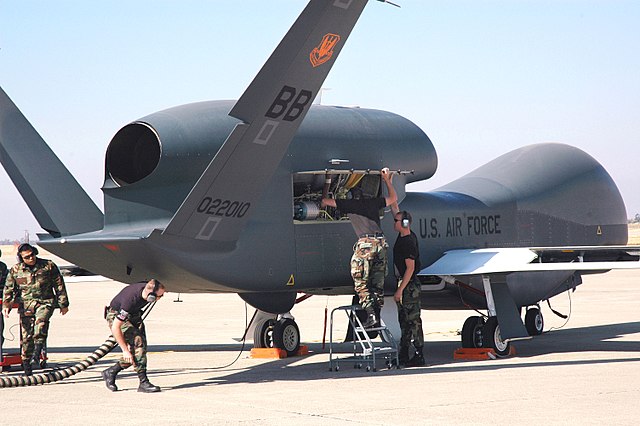High-altitude platform station
A high-altitude platform station also known as atmospheric satellite is a long endurance, high altitude aircraft able to offer observation or communication services similarly to artificial satellites. Mostly unmanned aerial vehicles (UAVs), they remain aloft through atmospheric lift, either aerodynamic like airplanes, or aerostatic like airships or balloons.
High-altitude long endurance (HALE) military drones can fly above 60,000 ft over 32 hours, while civil HAPS are radio stations at an altitude of 20 to 50 km above waypoints, for weeks.
Capable of flying up to 60,000 ft (18,300 m) more than 34 hours, the RQ-4 Global Hawk was put into USAF service in 2001.
NASA Pathfinder Plus
NASA Centurion
The KARI EAV-3 flew during 53 hours and up to 22 km (72,000 ft).
Northrop Grumman RQ-4 Global Hawk
The Northrop Grumman RQ-4 Global Hawk is a high-altitude, remotely-piloted surveillance aircraft introduced in 2001. It was initially designed by Ryan Aeronautical, and known as Tier II+ during development. The RQ-4 provides a broad overview and systematic surveillance using high-resolution synthetic aperture radar (SAR) and electro-optical/infrared (EO/IR) sensors with long loiter times over target areas.
Northrop Grumman RQ-4 Global Hawk
The prototype MQ-4C on its first flight
A maintenance crew preparing a Global Hawk at Beale Air Force Base
EuroHawk at the ILA 2012








